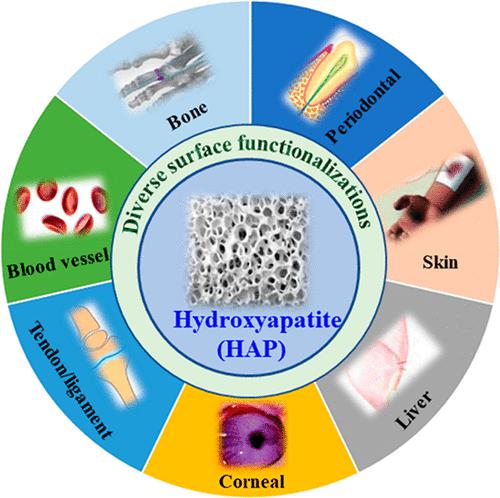当前位置:
X-MOL 学术
›
ACS Biomater. Sci. Eng.
›
论文详情
Our official English website, www.x-mol.net, welcomes your
feedback! (Note: you will need to create a separate account there.)
Functionalized Porous Hydroxyapatite Scaffolds for Tissue Engineering Applications: A Focused Review
ACS Biomaterials Science & Engineering ( IF 5.4 ) Pub Date : 2021-09-09 , DOI: 10.1021/acsbiomaterials.1c00438 Shrinath Bhat 1 , U T Uthappa 1, 2 , Tariq Altalhi 3 , Ho-Young Jung 2 , Mahaveer D Kurkuri 1
ACS Biomaterials Science & Engineering ( IF 5.4 ) Pub Date : 2021-09-09 , DOI: 10.1021/acsbiomaterials.1c00438 Shrinath Bhat 1 , U T Uthappa 1, 2 , Tariq Altalhi 3 , Ho-Young Jung 2 , Mahaveer D Kurkuri 1
Affiliation

|
Biomaterials have been widely used in tissue engineering applications at an increasing rate in recent years. The increased clinical demand for safe scaffolds, as well as the diversity and availability of biomaterials, has sparked rapid interest in fabricating diverse scaffolds to make significant progress in tissue engineering. Hydroxyapatite (HAP) has drawn substantial attention in recent years owing to its excellent physical, chemical, and biological properties and facile adaptable surface functionalization with other innumerable essential materials. This focused review spotlights a brief introduction on HAP, scope, a historical outline, basic structural features/properties, various synthetic strategies, and their scientific applications concentrating on functionalized HAP in the diverse area of tissue engineering fields such as bone, skin, periodontal, bone tissue fixation, cartilage, blood vessel, liver, tendon/ligament, and corneal are emphasized. Besides clinical translation aspects, the future challenges and prospects of HAP based biomaterials involved in tissue engineering are also discussed. Furthermore, it is expected that researchers may find this review expedient in gaining an overall understanding of the latest advancement of HAP based biomaterials.
中文翻译:

用于组织工程应用的功能化多孔羟基磷灰石支架:重点回顾
近年来,生物材料以越来越快的速度广泛应用于组织工程应用。对安全支架的临床需求增加,以及生物材料的多样性和可用性,迅速激发了人们对制造各种支架以在组织工程中取得重大进展的兴趣。近年来,羟基磷灰石 (HAP) 因其优异的物理、化学和生物学特性以及与其他无数基本材料易于适应的表面功能化而受到广泛关注。这篇重点综述重点介绍了 HAP、范围、历史概要、基本结构特征/特性、各种合成策略及其科学应用,重点关注功能化 HAP 在组织工程领域的不同领域,如骨骼、皮肤、强调牙周、骨组织固定、软骨、血管、肝脏、肌腱/韧带和角膜。除了临床转化方面,还讨论了基于 HAP 的生物材料在组织工程中的未来挑战和前景。此外,预计研究人员可能会发现这篇综述有助于全面了解基于 HAP 的生物材料的最新进展。
更新日期:2021-09-09
中文翻译:

用于组织工程应用的功能化多孔羟基磷灰石支架:重点回顾
近年来,生物材料以越来越快的速度广泛应用于组织工程应用。对安全支架的临床需求增加,以及生物材料的多样性和可用性,迅速激发了人们对制造各种支架以在组织工程中取得重大进展的兴趣。近年来,羟基磷灰石 (HAP) 因其优异的物理、化学和生物学特性以及与其他无数基本材料易于适应的表面功能化而受到广泛关注。这篇重点综述重点介绍了 HAP、范围、历史概要、基本结构特征/特性、各种合成策略及其科学应用,重点关注功能化 HAP 在组织工程领域的不同领域,如骨骼、皮肤、强调牙周、骨组织固定、软骨、血管、肝脏、肌腱/韧带和角膜。除了临床转化方面,还讨论了基于 HAP 的生物材料在组织工程中的未来挑战和前景。此外,预计研究人员可能会发现这篇综述有助于全面了解基于 HAP 的生物材料的最新进展。











































 京公网安备 11010802027423号
京公网安备 11010802027423号